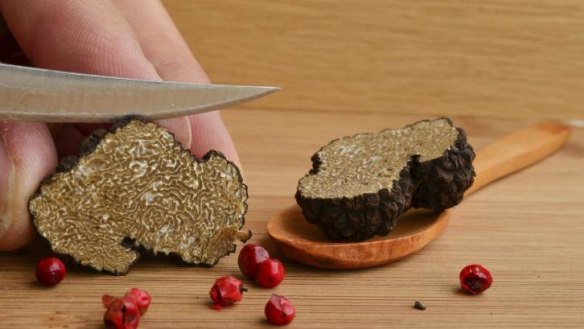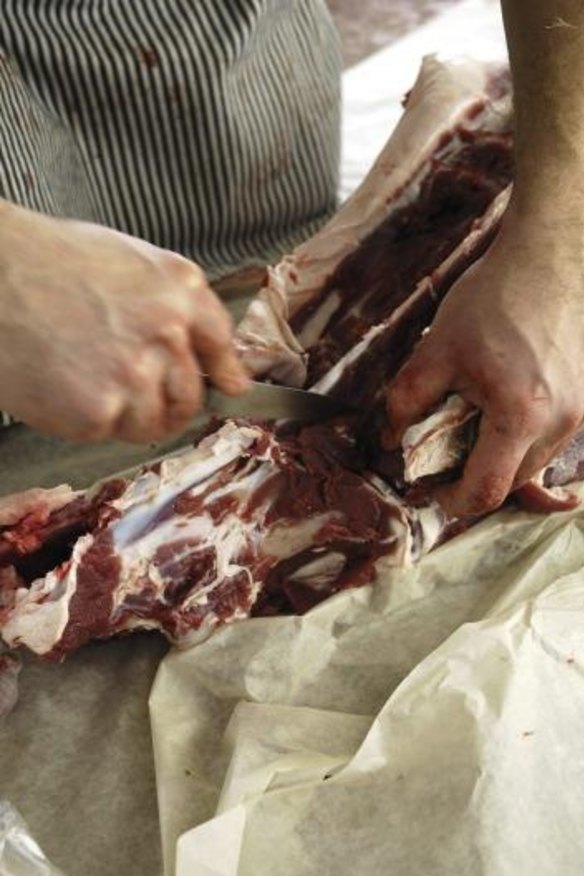Bryan Martin: Why my chestnut veloute champions local food and wine sourcing

My email went a little like this:
"We have this deer that was in the wrong place at the wrong time. Long story, but now it's hanging in the cool room over at Jeff's place and will be dealt with soon.
"My idea is to base the first two courses around the shoulder and neck. Make a rich stock to poach the shoulder in for eight hours. Then shred the meat and use half as the soup base and the rest cooked down with our wine, maybe with dried porcini, to a sauce.

"Serve this and the meat with gnocchi and parsley. The soup is the stock and some local chestnuts, cooked and blitzed. We'd soak some truffle in South Coast jersey cream to garnish the soup. I'll use some of Tim Malfroy's honey to make a dessert. All G?"
It's one of the things about my industry that you get asked to share the wine with food a lot. And don't get me wrong, it's an easy way of existing but to be asked to cook a meal to serve with you wine in the heart of Melbourne is something entirely different.
In Fitzroy, Melbourne, sits a tiny little wine bar called the Gertrude Street Enoteca. A place where you can buy wine to take home, have a glass of something interesting there, a light lunch, coffee or just hang out. Modelled on the same sort of role an enoteca has in Italy. This is the brainchild of wine guy, James Broadway and chef, Brigitte Hafner. Upstairs is a kitchen and small dining room where they host their kitchen table dinners.
Nonplussed with the usual format of wine dinners, that is someone like me standing up in a tattered suit and telling you, somewhat laboriously, what oak we use, the pH of the wine and what you should be tasting: "Look closer, can you see the underlying wet saddle and lacy gravel notes, leading to the chewy, almost – what is it, graphite and chocolate finish?" James and Brigitte started a series of dinners where you get the winemaker to bring some food along, stuff they grow or use in their area, their "terroir" so you get the whole picture and enjoy wine as it should be, with good food and company.
So the email above is a reply about what I could bring to Fitzroy for Brigitte's table "farm dinner", the first for the year. The process certainly got me thinking about where food comes from, that link in knowing the whole story – not just the barcode and price per kilo – how, why and where it lived, who looked after and it and, possibly a little more confronting to most, how it died.
A visit to the regional markets gave my plans purpose because here you get to see what is grown in the area and in season. It's June, I don't want to eat asparagus or even tomatoes now. What I want are chestnuts, truffles, Jersey cream, celeriac and mushrooms. All late autumn, early winter flavours. Sure, ask me to cook in a few months and I'll be looking for the first local spears to come on sale rather than from Spain.
The interest in our little area is huge and growing all the time, so it was nice to showcase some of the produce as well. Having just been on my first truffle hunt of the season really gave me the ultimate selling point for the dinner. Each year we go to this farm past Braidwood, where the truffles just seem to get better and better. The deep frosts have made the early season truffles burst out of the ground where you didn't need a dog to find them. You just trip over a cluster and say: "Oh, there they are."
This, along with a lost deer, gave me the main ingredients for the soup that was made from the venison bones along with these huge chestnuts and celeriac from the markets. This did turn out particularly well, and for me, I found a different way of using the truffle to enhance the dish. Rather than cook the truffle into the soup, macerating it for a few hours in rich, high-fat cream, extracted a wonderful, complex, yet subtle aroma.
So the message is, get to know where you food comes from and embrace the local area, make that your first question: "Where is this from?"
Chestnut veloute with celeriac, mushrooms and truffle cream
10g black truffle, scrubbed
100g butter
1 large leek, sliced
3 cloves garlic, chopped
150g celeriac, peeled and chopped
2 granny smith apples, peeled and diced
100ml dry maderia
200g potato, peeled and diced
500g peeled chestnuts
2 litres game stock (I used venison bones)
1 bay leaf
6 sprigs thyme
100ml double cream
4 king brown mushrooms, diced
handful chestnut mushrooms
chervil
salt and pepper
At least six hours before you start, grate half the truffle into the double cream, mix and leave in fridge until needed. The rest will be shaved over the soup, so don't lose it.
Heat 50g of the butter in a heavy-based pot and saute the leek, garlic and celeriac for a few minutes to soften. Next add the apple, continue to cook for a few minutes. Deglaze with the wine and add the potato and chestnuts. Add enough stock to just cover and then the herbs. Bring to a simmer and cook for 20 minutes or just until the chestnuts are cooked through.
Puree the soup and pass through a food mill or chinois to make a very smooth veloute, adding extra stock to get a nice consistency, season and keep warm.
In a frying pan heat the rest of the butter and lightly fry the mushrooms until cooked through, season.
Lightly whip the truffle cream just before you need it, this will make it easier to float on the soup.
Serve the soup in warm bowls with a swish of truffle cream, a mixture of the mushroom, a shave of truffle and top it off with chervil and a grind of black pepper.
Restaurant reviews, news and the hottest openings served to your inbox.
Sign up